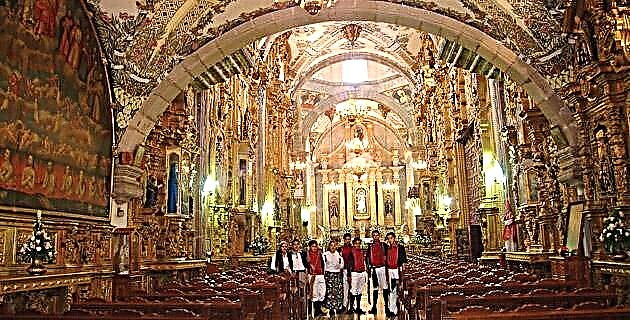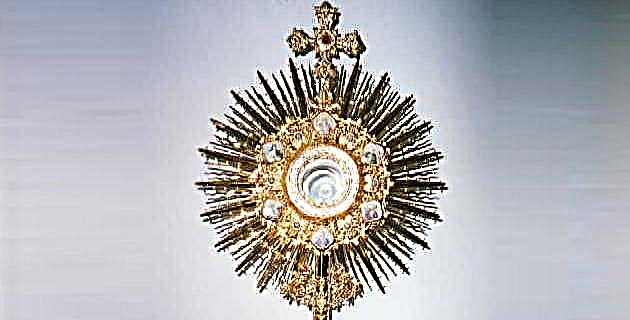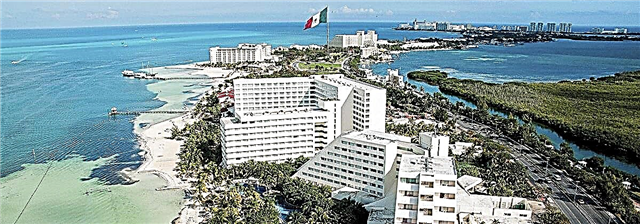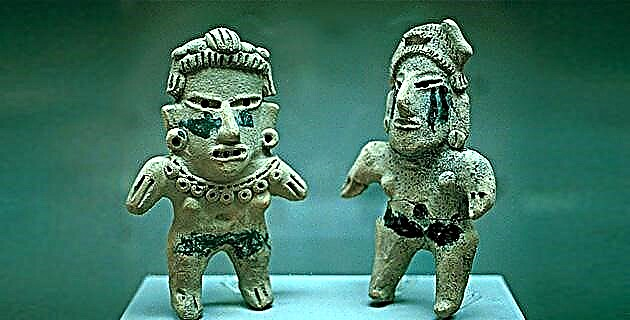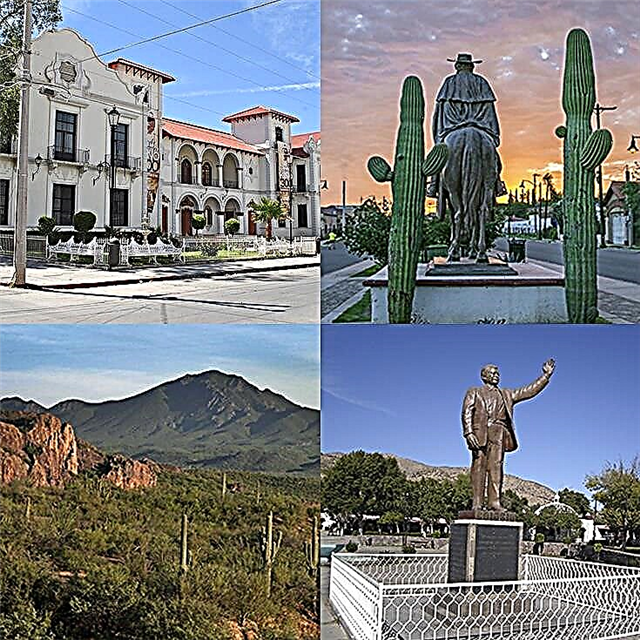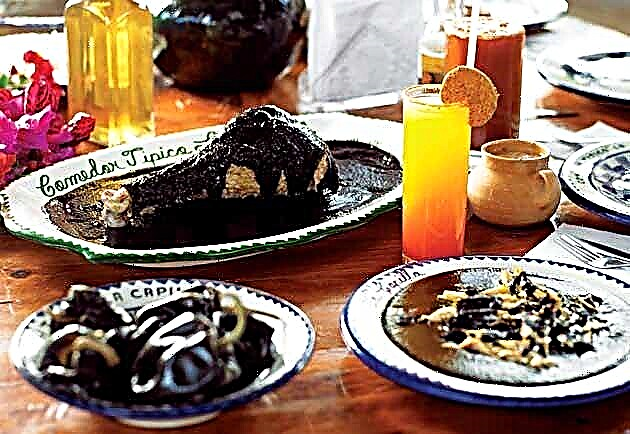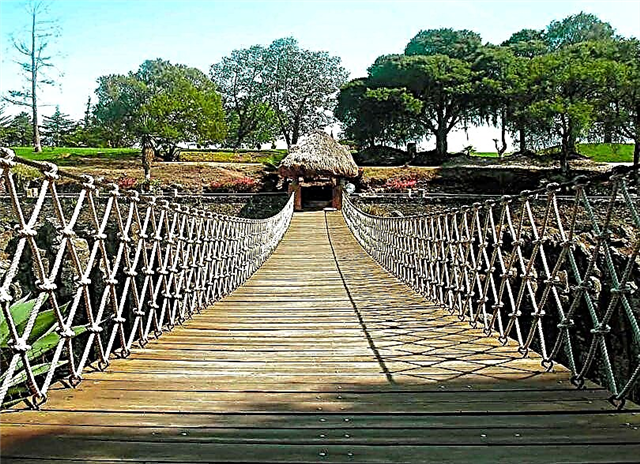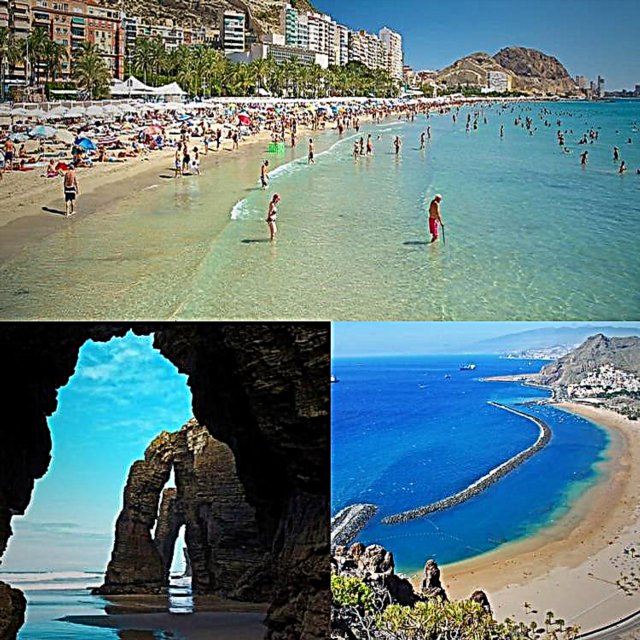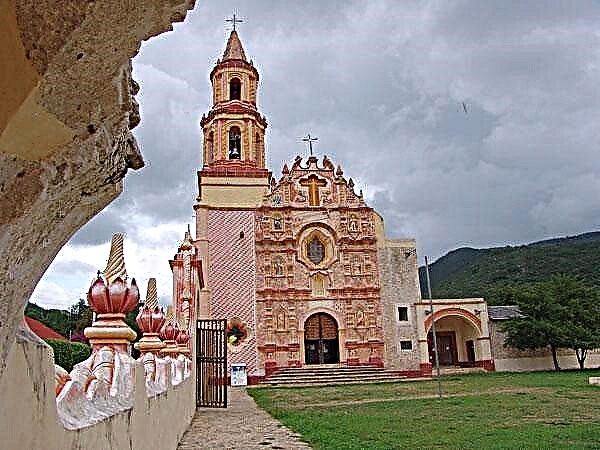
Blessed by Mother Nature, the Sierra Gorda de Querétaro is also home to invaluable artistic treasures that have been recognized as World Heritage Sites. Discover them!
The Cerro GordoAs the conquerors called it, it was the last bastion of the fierce Panes, Chichimecas and Jonacas Indians, tribes who astonished the Spaniards themselves and even us, who continue to recognize their artistic abilities with their works.
All the tenacity and strength of the natives materialized in the beautiful buildings of the churches of Jalpan, Concá, Landa, Tancoyol Y TilacoMissions that were built thanks to the patience and tenacity of the Franciscan friar Junípero Serra, who became a benefactor and defender of the indigenous people of that region in the face of the brutalities committed by the military against them.
So, when looking at their works one wonders, how is it possible that these men have been considered savage, barbarian, foolish, untamed and antisocial? Even in our days the adjective "Chichimeca Indian" is used in a derogatory way for those who seem foolish and closed to reason, but there is nothing more false. His story can be summarized in the sad metaphor of the saying: "The mule was not rude but the sticks made it that way."
These men who did not give up their lands and their freedom, neither with the power of arms, nor with the mistreatment of the conquerors; that survived in the mountains feeding on plants and roots, finally ended up giving themselves meek, willful and obedient to the benefactor work of Fray Junípero Serra, who managed, in addition to converting them to Christianity, erecting them into working and productive communities.
It was in 1744 when Captain José Escandón founded the five missions in which he did not obtain results, and to which Friar Serra came to take charge six years later.
Eyes of water, mighty rivers and fertile lands were the characteristics that determined the settlement of these missions, founded in places of very difficult access, in the midst of abundance and, therefore, populated by thousands of Indians.
Until then, after 200 years of insults and despite the numerical and warlike superiority of the Spaniards, these Indians continued to resist the spiritual and material conquest, so the military only sought their extermination at the cost of whatever it was. this meant an embarrassment only 30 leagues from the Spanish Court.
Evangelization and peacemaking in the Sierra Gorda of Querétaro it was an arduous and complicated adventure. The Augustinian and Dominican missionaries arrived before the Franciscans, but they left without any success, consequently, the extermination of the Indians seemed imminent.
Finally, whoever succeeded achieved it through patience and reason: from the Colegio de San Fernando, in Mexico City, the first thing that Fray Junípero Serra did to tame the Sierra Gorda beast was to feed it.
Evangelizing work
Fray Junípero's success with the Indians was due to the fact that he understood that first he had to solve problems of a material and temporal nature and then try to evangelize, because, as he himself pointed out to the Crown: “… there is nothing more absurd and condemned to the failure to pretend to convert the Indians by means of decrees ”.
Their reluctance to Christianity was mainly due to the fact that they lived scattered in the mountains and had to look for food to survive despite the wealth of the land. Finally, the Franciscan father offered them what was necessary so that they would no longer walk in the mountains.
Later, the friar faced the second and greatest problem: the military. Since 1601, when the first missionary, Fray Lucas de los Ángeles, entered the Sierra Gorda, the military was the cause of all conflicts and the failure of the evangelizing enterprise.
In the quest to put their material convenience first and obtain most of the goods, the soldiers disobeyed the orders of the Crown and insisted on provoking war against the Indians, who also longed for their freedom. Likewise, the soldiers made the name of God hateful to the Indians and to all foreigners, for this reason, the Indians in revenge, destroyed the missions and desecrated their images.
The protective captain, the mestizo Francisco de Cárdenas, pleaded with the mission visitor, in 1703, to wage the war of extermination: “… by subjugating the Indians… his majesty would save the synod that he was giving to the missions; that they could be exploited with complete freedom in the many silver mines that are not made for fear of the rebellious Indians ”.
Undoubtedly, a determining factor for the destiny of the natives and the missions was the negotiating capacity of the friar born on the island of Mallorca, Spain. Such was their work in Querétaro, that the military argued a possible independence of the friar and his missions from the Crown.
In a very short time, his works and negotiations allowed him to stop the voracity of the soldiers and obtain more resources, which he invested in animals and machinery to work the land.
Junípero not only demonstrated that the assessments of the military, who described the Indians as murderous and lazy, were totally wrong, he also managed to form excellent coordination, so that at the time of his departure for Mexico the five communities were quite self-sufficient, the families had their livelihood assured and their chores well defined. Then the friars were able to dedicate themselves to the proliferation of their faith.
After eight years of work, Junípero is called to Mexico, where he takes the greatest trophy he could have obtained: the Goddess Cachum, Mother of the Sun and last of the Pame idols, which they kept jealously guarded in the mountains and which the military had searched in vain for many years. On one occasion, as a sign of their obedience and self-denial, they had handed her over to Father Serra.
His fame as a good channel of the Indians towards Christianity transcended and was recognized in Spain, from where they decided to transfer him to a highly conflictive point, such as Alta California, where an invasion by the Russians or the Japanese was feared, and the Apaches committed terrible atrocities. And it is there, precisely, where Fray Junípero Serra will achieve his greatest evangelizing work.
More than 200 years after his death -in 1784-, both in Spain like in Mexico and, above all, in United States, is revered as the founder of the famous California missions, and a monument was erected to him in the Washington Capitol. The strength of spirit of the little friar is not forgotten because his works, such as the beautiful churches of Querétaro and the proliferating missions of California, perfectly exemplify his greatness.
The Friar Pata Coja
After knowing the work of this extraordinary man, it is interesting to know the details of his arrival in America.
Enthusiastic about the enormous work that was in the new continent, Brother Junípero manages to embark together with his inseparable friend, confessor and biographer, Father Francisco Palou, in the expedition of the Franciscan missionaries who will arrive at the port of Veracruz.
From the beginning the setbacks appear, which are only the prelude to the adventure that awaits them in their evangelizing work.
Delirious because the water ran out days before, the island of Puerto Rico miraculously appears to save them from dying of thirst. Days later, when they tried to reach Veracruz, a powerful storm pushed them towards the ocean so that, sailing against the current, they managed to anchor on December 5, 1749, but with the ships burned.
Upon arrival in the new continent, the transport that will take him is ready, but Fray Junípero decides to make the journey to Mexico City on foot. He walked through the still virgin jungles of Veracruz and one night some animal bit him on the foot, leaving it marked forever.
All his life he suffered from the sore that caused that bite, which prevented him from walking with agility but which he himself refused to heal; Only on one occasion did he accept that the mule curator gave him treatment, not observing any improvement in his pain, so he never again allowed assistance.
This did not detract from the abilities and adventures of the “lame leg” friar, who according to his biographer, Palou, was seen saying mass the same as carrying the joists of the new temples in Querétaro or California with the Indians.
Only because of the different changes of residence, Brother Junípero did not leave any more mark than these missions. However, in Alta California an entire era opened, considered by historians such as Herbert Howe, "the golden age of California", a land from where he fought for the dignity of the Indians and where he worked lucidly until the last day of his life, the August 28, 1784.
Eification of warriors
Junípero also had the gift to lead all that bravery towards the artistic feeling of the Indians. An example of this are the constructions of Querétaro, monumental architectural beauties that do not need recommendation, since by themselves they have a magnetic magic that makes the viewer turn the eyes that ends up getting lost in the labyrinths that characterize them.
This friar not only managed to get the most courageous Indians to take Christianity as theirs, but also to collaborate in their companies. Despite his vague knowledge of architecture, he managed to build vaulted churches, and it was only by the will and firm faith that he had sown in the natives that they were able to sustain such a difficult construction. Characteristics of all of them are the mestizo iconographic details, which speak of the excellent participation of the Indians misnamed "savages", who actually turned out to be artists of great gifts capable of achieving these immense facades.
From oblivion to opulence
Unfortunately, all five missions have suffered damage to their buildings. In almost all of them the headless saints and incomplete architectural details appear. Others were rescued from the clutches of bugs like bats that took refuge there while they were abandoned. Carved with the most rudimentary technology, these churches remain beautiful and standing but remarkably deteriorated.
During the more than 200 years that have elapsed since its construction, they have gone from opulence and grandeur, to abandonment, looting and neglect. At the time of the Revolution, precisely because of their difficult access, they served as lairs for revolutionaries and rustlers who found them in unsuspected places covered by the immensity of the Sierra Gorda.
Currently the churches are maintained, but the resources they have are not sufficient to avoid the deterioration to which they are exposed by environmental conditions and the passage of time, much less to restore the damage caused previously. Let's not let them disappear.
FIVE ARCHITECTURAL JEWELS OF THE SIERRA GORDA
Jalpan
Jalpan was the first mission founded on April 5, 1744; its name comes from Nahuatl and means "on the sand". It is located 40 km northwest of Pinal de Amoles.
Jalpan is dedicated to the apostle Santiago, although today the effigy of the apostle is replaced by an incongruous clock. On its façade there is a Spanish-Mexican eagle that could well represent the Habsburg eagle and the Mexican eagle devouring a snake.
Concá
Concá is the smallest of the five churches and was dedicated to San Miguel Arcangel. Its façade symbolizes the victory of faith and it was the second mission founded by Captain Escandón. The cover that it has of enormous bunches of grapes stands out on its cover, as well as its original conception of the Holy Trinity and the representation of the archangel Saint Michael. Like Tancoyol, it has suffered serious damage, so that two headless sculptures can be seen.

Landa
Landa, from the Chichimeca voice "muddy“It is the most ornate mission of all; At present its full name is Santa María de las Aguas de Landa. Its facade symbolizes "the City of God", according to scholars of religion. Dozens of details attract attention as several chapters and interpretations are staged on its facade.
Tilaco
Building dedicated to San Francisco de Asís, Tilaco is the most complete set of missions, and it means in Nahuatl “black water". It is located 44 km east of Landa.
It has a church, convent, atrium, chapels, open chapel and artificial cross. On its façade the figures of four mermaids stand out, whose interpretation lends itself to controversy, as well as the vase with oriental elements that finishes off the façade.

Tancoyol
Huasteco name, Tancoyol is the "Place of the wild date". Its cover is the most worthy example of the baroque style. Dedicated to Our Lady of Light, her effigy disappeared and her place remains empty.
The crosses are a recurring detail throughout the façade, such as the Jerusalem cross and the Calatrava cross. Hidden among beautiful scenery, it is located 39 km north of Landa.

These architectural jewels await the passing of time, to be cared for and preserved because their beauty is worth a trip to the Sierra Gorda de Querétaro. Do you know any of these missions?

